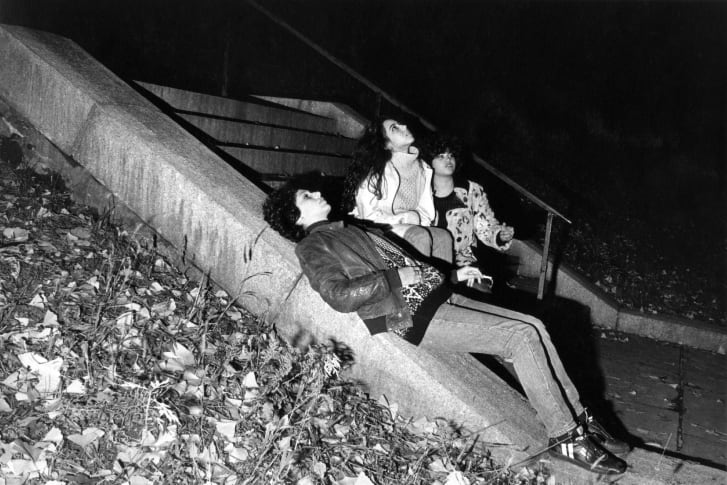In black-and-white photographs, the relationships of several teenage girls unfold through after-school hangouts, late-night parties and prom photos in mid-1980s New York. They are Blake and Leslie, two Jens, Zoe and Molly, applying makeup in mirrors, deep in conversation on the subway and shielding their cigarettes from the wind. Fast forward and they have partners and children, the women weaving in and out of each other's lives like a tangled braid.

Three decades after she began photographing the friends, the photographer Karen Marshall has published the longtime body of work in a new book, "Between Girls."
But one face is absent just ten months into the series: the exuberant Molly, who welcomed Marshall into their lives and was the connecting thread between many of the young women. What started as a documentation of girlhood transformed into a more complicated story after Molly was hit by a car and killed while on summer vacation in Cape Cod.
"I wanted to look at the emotional bonding that happens between girls at 16. That was my premise and my intention," Marshall said in a phone interview of her initial idea. After photographing the group during their junior year, however, she didn't know how to finish the series. "I hadn't gotten to that yet. And I was asking that question to myself...in senior year will something be a little different? And then (Molly) died. So that put me down another path."
Marshall met Molly through a family for whom the teenager babysat -- Marshall was in her 20s at the time and studying at the International Center of Photography (she now chairs the program she attended). Molly and her friends mostly lived on the Upper West Side, came from single-parent households, were "fiercely independent," Marshall noted, and "had a really good sense of self."

"They were on their own in a lot of ways -- there was a sense of insecurity, but there was also a certain base of self-definition and style and sassiness," she said. In Marshall's photographs, the girls evoke a sense of youthful freedom. In one image, Molly, Leslie and one of the Jens playfully sprawl out on an apartment floor littered with magazines, a coffee cup and a rotary telephone, their arms stretching nearly to touch in the center like a sunburst.When Molly died, Marshall said, "it was devastating, and very weird.""I really felt profoundly close...to them, and then they're gone. And I also had lost a friend in high school. So it brought up some of that trauma, too, I suppose," she explained. It made her think about "the vulnerability of teenagehood," she added, "where you think you're invincible and you're not."
'They will always be bound by this marker in their life'
After Molly's death, Marshall gave the girls space to heal, photographing them less, but by the end of their senior year she wanted to be present for their milestones like prom and graduation. In the years and decades following, up until 2015, she reconnected with them as they grew up and began families of their own, taking photographs and recording videos, too."What was interesting is that when when they dispersed (after high school), they actually were much more open to seeing me," Marshall said. Blake was the first to marry, and in the second half of the book the images shift to the girls, now women, smiling with partners and parenting their kids. In one portrait, one of the Jens is at home, pregnant in a cropped tank top and sweatpants, gazing down at her changing body.